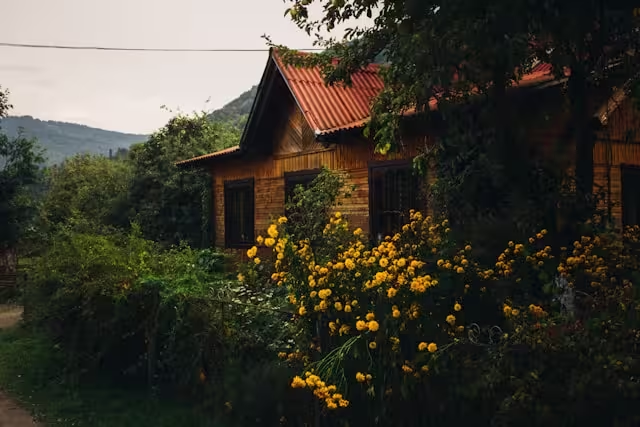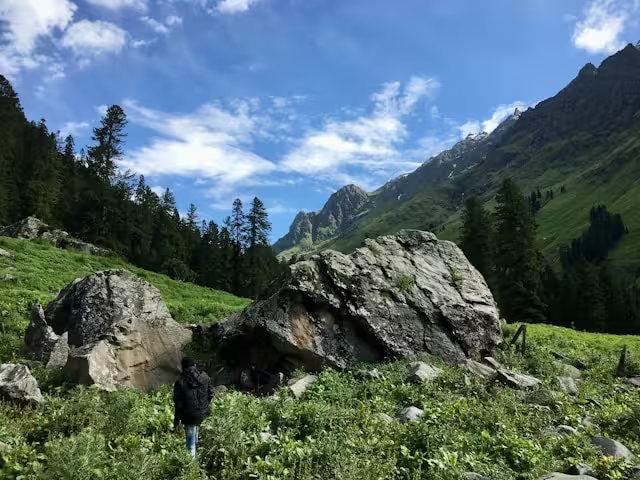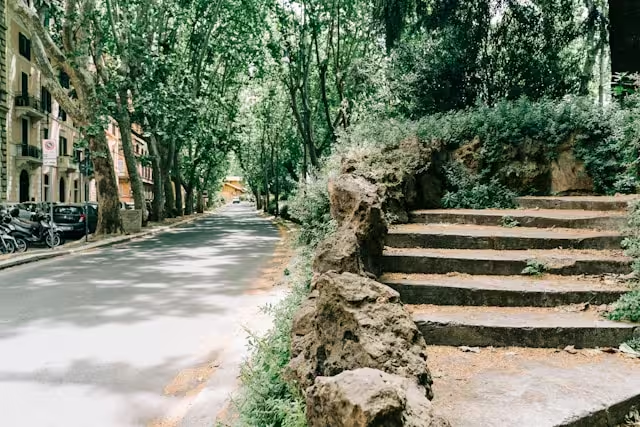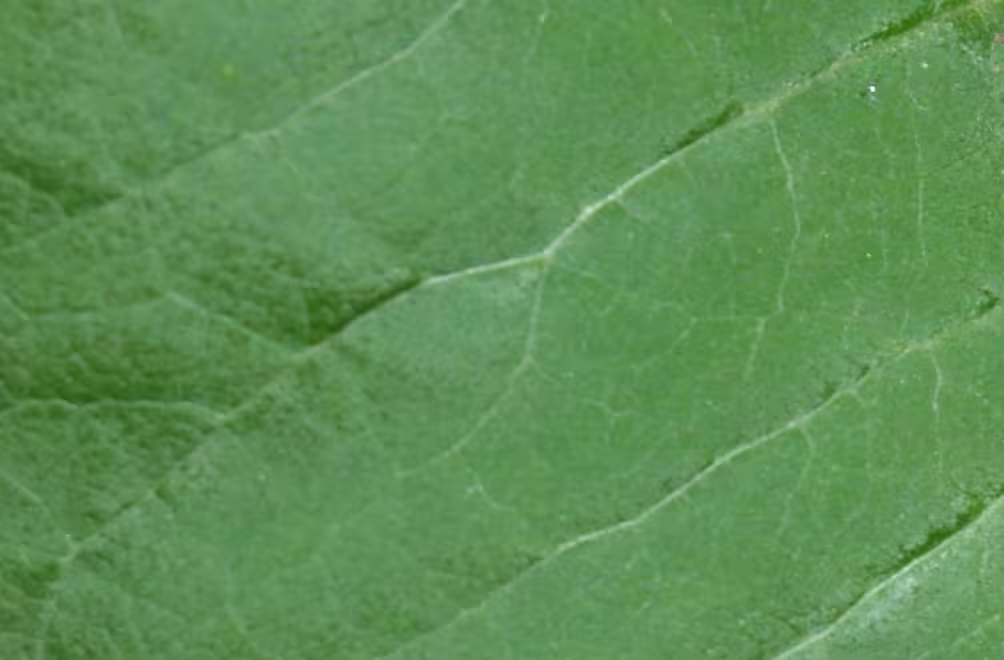The modern internet is a visually demanding environment. We are bombarded with aggressive calls to action, flashing banners, and jarring color combinations designed to fight for our attention. The result is a pervasive sense of “digital fatigue,” a cognitive overload that leaves users feeling drained and disconnected.
The fundamental issue is that many web designs work against our core biology. There is, however, a more effective and humane approach. It begins by understanding that humans have an innate, subconscious preference for the patterns, forms, and colors found in the natural world. This concept is known as the Biophilia Hypothesis. By applying its principles, we can move from creating websites that shout to crafting digital experiences that resonate.
This article provides a technical framework for selecting, testing, and implementing a harmonious color palette derived from natural hues. Following this guide will not only improve your website’s aesthetics but also demonstrably enhance user experience (UX), build brand trust, and support your search engine optimization (SEO) goals by encouraging users to stay longer and engage more deeply.
Table of Contents
The “Why”: The Psychological & Biological Basis for Natural Color Palettes

Before we begin mixing colors and defining HEX codes, it is critical to understand the science behind why a nature inspired color palette is so effective. The choice of a color palette is not merely a decorative decision; it is a foundational element of user interface design that directly influences human psychology and behavior.
The Biophilia Hypothesis in a Digital Context
In 1984, the Harvard biologist Edward O. Wilson proposed the Biophilia Hypothesis, suggesting that humans possess an inherent tendency to seek connections with nature and other forms of life. For hundreds of thousands of years, our survival depended on our ability to interpret natural environments. We learned that lush greens signal water and food, deep blues indicate clean water sources, and earthy browns represent solid ground and shelter. These associations are deeply embedded in our collective psyche.
In a digital context, these ancient cues still function. A website that uses a chaotic, artificial color palette is the digital equivalent of a noisy, confusing, and potentially dangerous landscape. It raises our cognitive load, requiring more mental energy to navigate and understand. Conversely, a website that employs a natural and harmonious color palette mimics the signals of a safe, resource rich environment. This has tangible benefits:
- Stress Reduction: Natural colors, particularly blues and greens, have been scientifically shown to lower heart rate and reduce stress. A calm user is a more focused user.
- Increased Dwell Time: When a digital environment feels welcoming and non-threatening, users are more likely to stay longer, explore more pages, and absorb your message. This “dwell time” is a positive signal to search engines like Google.
- Improved Cognitive Function: A clean, natural color palette reduces visual clutter, allowing users to find information more easily and complete tasks more efficiently.
Color Psychology of Earth Tones and Organic Hues
Each color in your chosen color palette carries its own set of psychological associations. When working with natural hues, you are tapping into a powerful and universal language that can shape a user’s perception of your brand.
- Greens: Universally associated with growth, nature, health, and renewal. A color palette rich in greens is excellent for brands in the wellness, finance, and environmental sectors. Darker forest greens (HEX #228B22) convey stability and wealth, while lighter sage greens (HEX #B2AC88) feel calming and organic.
- Browns: The color of the earth, wood, and stone. Brown communicates stability, reliability, honesty, and warmth. It is a grounding color that can make a brand feel established and trustworthy. A rich, dark brown color palette can feel luxurious, while lighter tans and beiges (HEX #F5F5DC) are warm, neutral, and welcoming.
- Blues: The color of the sky and water. Blue is overwhelmingly associated with trust, logic, communication, and calm. This is why it is so prevalent in the tech and financial industries. A deep navy blue (HEX #000080) communicates intelligence and authority, while a lighter sky blue (HEX #87CEEB) feels open and serene. A color palette using blue is a safe and powerful choice for building user confidence.
- Greys and Stones: Grey is the color of balance, neutrality, and sophistication. Derived from rock and overcast skies, it is a perfect supporting color in a natural color palette. It provides a clean, modern backdrop that allows other colors to stand out. A charcoal grey (HEX #36454F) is a softer, more natural alternative to pure black.
- Muted Tones: An essential characteristic of many natural colors is their desaturation. Unlike the pure, vibrant colors of a computer screen, colors in nature are often muted by atmospheric light and texture. Using these softened tones in your color palette creates a more sophisticated, calming, and less jarring visual experience.
The “What”: Deconstructing and Sourcing Natural Hues

The most effective way to begin building your color palette is to look directly at the source: nature itself. Every natural environment contains a perfectly balanced and harmonious color palette that has evolved over millennia. By learning to see and extract these palettes, you can ground your design in a foundation of natural harmony.
Finding Inspiration in Natural Biomes
Instead of starting with an abstract color wheel, start with a concrete image of a natural landscape. Different biomes provide distinct and emotionally resonant color schemes. Choose one that aligns with your brand’s intended feeling.
- Forest: This environment offers a color palette that feels grounding, lush, and alive. Think of deep mossy greens, the rich browns of tree bark, the dark soil, and the soft, filtered light. This palette is ideal for brands focused on health, growth, and sustainability.
- Desert: A desert color palette is warm, expansive, and serene. It is composed of sandy beiges, rich terracotta reds, the muted green of cacti, and the clear, pale blue of a desert sky. This palette works well for brands that want to feel warm, artisanal, and sophisticated.
- Coastal/Oceanic: This biome provides a color palette that feels clean, calm, and trustworthy. It includes various shades of blue from deep ocean to light sky, sandy whites and beiges, the soft grey of weathered driftwood, and perhaps a bright accent of coral. It’s a perfect fit for tech, finance, and health brands.
- Alpine/Tundra: This landscape offers a minimal, clean, and modern color palette. It is dominated by the stark whites of snow, the deep greys of stone, the subtle greens and blues of lichen and ice, and the dark tones of rock faces. This palette is excellent for minimalist designs, luxury goods, and brands that want to convey precision and strength.
Actionable Tip: Go to a website with high quality photography (like Unsplash or Pexels) and search for one of these biomes. Find an image where the colors and mood align with your brand. Save this image. It will be the direct inspiration for your website’s color palette.
Tools for Extracting and Managing Your Palette
Once you have your inspiration image, you can use powerful and often free online tools to scientifically extract its core colors. This removes the guesswork and provides you with the exact digital codes you need.
A “HEX code” is simply a six-digit alphanumeric code (e.g., #FFFFFF for white) that tells a web browser the precise color to display. These codes are the foundation of your digital color palette.
- Adobe Color: This is an industry standard tool. Its most powerful feature for our purpose is the “Extract Theme” function. You can upload your inspiration photo, and the tool will automatically identify the five most prominent and harmonious colors, providing you with their HEX codes instantly.
- Coolors.co: An excellent and easy to use tool that not only lets you extract colors from an image but also helps you quickly generate and refine a full color palette. You can lock colors you like and press the spacebar to find other colors that work well with them.
- Image-Color.com: A very simple, no frills tool. You upload an image, and it gives you a breakdown of the primary colors present, along with their HEX codes.
Using one of these tools, upload your chosen landscape photo. The color palette it generates will be your starting point. You will likely get a mix of 3 to 5 colors that are guaranteed to be harmonious because they were pulled from the same natural source.
The “How”: A 5-Step Framework for Building Your Harmonious Palette

With your raw colors extracted, the next step is to structure them into a functional website color palette. This requires a systematic approach that balances brand identity, design principles, and technical requirements.
Step 1: Establish Your Dominant Base Hue
From the 3 to 5 colors you extracted, you must choose one to be your primary, or dominant, color. This color should be the one that best represents your brand’s core identity. For a tech company focused on trust, this might be the deepest blue. For a wellness blog, it would likely be the most prominent green or earthy tone. This dominant hue will be the most visible color on your website and will be closely tied to your brand.
Step 2: Apply the 60-30-10 Rule
This is a classic interior design rule that works perfectly for creating a balanced and professional looking website color palette. It ensures that your colors are distributed in a way that is pleasing to the eye and easy to understand.
- 60% (Dominant Hue): This is your primary color, often a neutral or soft version of your base hue. It will be used for most of the background space on your website. Its job is to set the overall tone and act as a backdrop for everything else.
- 30% (Secondary Color): This color should contrast with your dominant hue. It is used to highlight secondary information, such as content boxes, sidebars, and testimonials. This is often where the most interesting color from your extracted color palette will live.
- 10% (Accent Color): This is your most vibrant color. Its job is to draw attention to critical elements like call to action buttons, links, and icons. It should be used sparingly to maximize its impact. A bright, complementary color often works best here.
Step 3: Select Secondary and Accent Colors Using Color Theory
If the palette you extracted from your image doesn’t give you a clear secondary and accent color, you can use basic color theory to complete your color palette.
- Analogous: To create a very serene and minimalist color palette, choose colors that are right next to each other on the color wheel (e.g., green, blue green, and blue). This creates a low contrast, highly harmonious feel.
- Complementary: For a more dynamic color palette with a strong call to action, choose colors that are directly opposite each other on the color wheel (e.g., a dusty orange and a slate blue). The high contrast is perfect for making your accent color “pop.”
- Triadic: This involves choosing three colors that are evenly spaced around the color wheel. To keep the scheme feeling natural, use muted or desaturated versions of these colors.
Step 4: Incorporate Neutrals for Space and Clarity
Every good color palette needs neutrals. These are the colors that provide breathing room and improve readability. In a biophilic design, avoid using pure black (#000000) for text or pure white (#FFFFFF) for backgrounds. Pure black is harsh on the eyes and rarely found in nature.
Instead, use “off blacks” like a very dark charcoal grey (#36454F) or a deep olive. For your background, use a soft off white, a light beige, or a very light grey. These subtle shifts create a softer, more organic reading experience that reduces eye strain.
Step 5: Test for Accessibility and Contrast
This is the most critical technical step in creating a professional color palette. Web accessibility means designing your site so that people with disabilities, including visual impairments, can use it. The Web Content Accessibility Guidelines (WCAG) provide standards for this, and a key requirement is color contrast.
Contrast ratio is a measure of the difference in perceived “brightness” between two colors, expressed as a number (e.g., 4.5:1). WCAG requires a contrast ratio of at least 4.5:1 for normal text and 3:1 for large text.
Before you finalize your color palette, you must use a contrast checking tool to ensure your choices are compliant.
- Recommended Tool: WebAIM Contrast Checker. It’s a free online tool where you can enter the HEX codes for your text color and your background color. It will instantly tell you if you pass or fail the WCAG standards.
Failing to do this not only excludes a significant portion of the population but can also have negative SEO consequences. A beautiful color palette is useless if users cannot read your content.
Application and Advanced Concepts in Web Design

Once your accessible and harmonious color palette is defined, you can explore more advanced techniques to bring your biophilic design to life.
Beyond Flat Color: Using Natural Textures and Gradients
Nature is rarely a single flat color. You can add depth and realism to your design with subtle effects.
- Gradients: Instead of a solid blue background, consider a very subtle gradient that moves from a slightly lighter blue to a slightly darker one, mimicking the gradation of the sky or the depth of water.
- Textures: Use a faint, low opacity pattern as a background for larger sections. This could be a subtle wood grain, a stone texture, or the pattern of a leaf vein. The key is to keep it extremely subtle, so it adds depth without distracting from the content.
Case Studies: Website Examples with Excellent Natural Palettes
- Imagine a Yoga App: Its primary color palette uses a soft sage green (60%) as the background. The secondary color is a warm beige (30%) for content cards. The accent color is a muted terracotta (10%) for buttons like “Join Class.” The text is a dark charcoal. The overall feeling is calm, grounding, and healthy.
- Imagine a Financial Advisor’s Website: The dominant color is a deep, trustworthy navy blue (60%). The secondary color is a professional, light stone grey (30%). The accent color for CTAs is a rich, stable gold (10%), implying value and success. This color palette feels secure, intelligent, and premium.
Common Pitfalls to Avoid
- “Muddy” Palettes: This happens when you use too many colors that are similar in tone and saturation. The design lacks contrast and everything blends together, making it hard to navigate. Stick to the 60-30-10 rule to avoid this.
- Poor Readability: The most common mistake is choosing a light grey text on a white background or a colored text on a similarly colored background. Always test your color combinations with a contrast checker.
- Brand Mismatch: Do not choose a calm, coastal color palette if your brand is a high energy fitness company. The colors must always align with the brand’s core message and personality.
Frequently Asked Questions (FAQ)
Q1: What are the 4 main natural colors for design?
Answer: While nature is infinitely varied, a foundational color palette for design is often built from four core categories: The Greens (representing vegetation and life), The Blues (representing water and sky), The Browns/Beiges (representing earth, wood, and stone), and The Greys (representing stone, minerals, and atmospheric light).
Q2: How do you create a nature inspired color palette from a photo?
Answer: The most efficient method is to use a free online tool like Adobe Color or Coolors.co. You simply upload your inspirational photograph (e.g., a forest scene), and the software will analyze the image and automatically extract the five most dominant HEX codes, providing you with a perfectly harmonious starter color palette.
Q3: Are natural colors good for branding?
Answer: Yes, they are exceptionally effective for branding. A natural color palette subconsciously communicates powerful brand attributes like trust, stability, health, and calm. This makes them ideal for brands in the finance, healthcare, technology, wellness, and sustainability sectors.
Q4: How do I ensure my natural color palette is accessible for visually impaired users?
Answer: The single most important step is to check your color combinations using a contrast checking tool like the WebAIM Contrast Checker. You must ensure that the contrast ratio between your text color and its background color meets the WCAG 2.1 AA standard of 4.5:1.29 This ensures your content is readable for the widest possible audience.
Conclusion
Creating a harmonious color palette with natural hues is far more than an aesthetic exercise. It is a strategic design process rooted in human biology and psychology. By understanding the principles of biophilia, you can create a digital experience that reduces stress, builds trust, and encourages deeper user engagement. The framework is straightforward: begin with inspiration from the natural world, use digital tools to extract a base color palette, structure it with the 60-30-10 rule, and rigorously test it for accessibility. This methodical approach ensures your final color palette is not only beautiful and harmonious but also functional, inclusive, and effective at achieving your business goals.